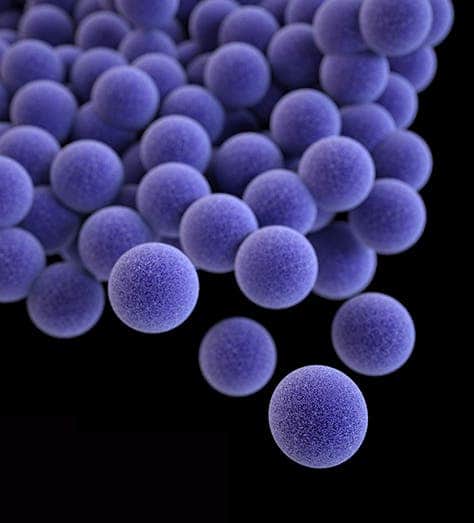Some bacteria, like the Staphylococcus aureus, are so uniform in size that they look like they’ve been bred in a factory. How or why does this happen? Using innovative microfluidics devices, US researchers were able to study thousands of bacteria individually, something extremely difficult if not impossible to do in the past, and found that generation by generation bacteria actually change their size and shape, but collectively retain the same volume. The bacteria stick to this behavior as if governed by a rule or law; something that might help explain why animal organs are always of particular size and shape, why are individual cells of a particular shape for that matter or, ultimately, what is it that regulates all this.
Uniform bacteria – the secret to their growth might explain how our own bodies come to be

Traditionally, when studying bacterial growth biologists analyze tens of millions of cells in a culture flask – everything is studied in bulk, not individually. By shining a light through the tube where the culture is placed, you can track growth by measuring how the cells dimmed the light. Using this method, biologists found that populations of bacteria grow exponentially, doubling in mass at regular time intervals. Following the same reasoning, everyone assumed that the same stayed true for individual cells as well, dividing only when they have doubled in size.
A new research made by a group led by Suckjoon Jun of the University of California-San Diego found this not to be true, however.
“Even though on average it is true that mass doubles,” the authors of the paper published in Current Biology write, “when you look at individual cells it becomes apparent that something else is going on.”
The insight came after they decided to individually study bacterial members, using a “mother machine” – a microfluidic device consisting of growth channels at right angles to a trench that is continually flushed with growth medium. The video below shows the machine in action.
After examining hundreds of thousands of individual cells from birth to division, researchers found that rather than doubling in size every generation, each cell added the same volume. In other words, a cell that was small added the same volume as a cell that was large. Eventually, over many generations this rule ensures that cells in a population maintain a constant size. Another video posted below visually explains this rule.
“This study really shows how new technologies, in this case the development of the ‘mother machine’ to visualize single bacteria in real time, can lead to new and unexpected answers to old problems,” said Petra Levin, PhD, associate professor of biology in Arts & Sciences at Washington University in St. Louis who was also part of the study.
“Pinning down the growth rule is important,” she added, “because it provides clues to the underlying biochemical mechanism that ultimately controls growth. The mechanism is probably essential — or nearly so — and thus good target for new antimicrobials.”
“Surprisingly little is known about biological size control in general,” Levin said.
“Why are we the size we are? Why are our organs the size they are? Why are the cells in those organs a stereotypical size? What regulates that?”
“We take all this for granted,” she said, “but really, very little of it is understood.”






